Termite monitoring and eradication
Research on Termite Monitoring and Eradication
Globally, termites are regarded as the most economically damaging urban pests given their potential to severely damage timber in buildings. Termites are predominantly tropical and sub-tropical in distribution. However, mainly as a result of human activity and warming climates, they are found in increasingly more northern and southern latitudes.
In natural forest systems, grasslands and other natural ecosystems, especially in the tropics, termites play a vital role as ‘soil engineers’. They helps to support nutrient cycling, the maintenance of soil structure and ecosystem balance. Termites are predominantly tropical and sub-tropical in distribution. However, due to human activity and climate change they are spreading into higher latitudes. Subterranean termites are endemic in Southern Europe. In France, a so-called “termite law” exists to make sure buildings are properly constructed t protect them against termites.
Termites are not endemic in the UK. Subterranean termites (of the species Reticulitermes grassei) were initially discovered in a private property in Devon in 1994 and became the subject of an intensive eradication and monitoring programme in 1998 when it was found the termites were distributed across at least two properties.
This infestation remains the only known established infestation of subterranean termites to be recorded in the UK. Despite initial success in bringing about the collapse of the infestation, a localised reappearance of termites was recorded in 2009 and 2010 resulting in the eradication and monitoring programme being extended. The programme, which was conducted by BRE and managed by the Department for Levelling up, Housing and Communities DLUHC, was declared a success in 2021 when the termites were finally eradicated.
Termite identification and reporting
There are a wide variety of ways in which termites could be imported into the UK, almost always involving humans. Professionals such as building surveyors, builders, horticultural industry worker, timber merchants as well as the public and gardeners, can help be vigilant over the possible detection of termites.
The economically important termite species that can cause damage timber in buildings are subterranean termites and drywood termites.
Subterranean termites
Require a continuous source of moisture.
Concealed in earthen or mud workings.
Generally consume wood along the grain, preferring softer, spring growth and often leaving intact wafers of timber comprised of harder summer growth.
Often form large colonies or inter-connected colonies comprised of thousands or millions of worker termites.
Drywood termites
Rely on moisture content of dead wood (timber).
Produce ‘kick’ holes from which they expel poppy seed-like faecal pellets.
Generally consume wood across the grain, consuming both spring and summer growth.
Colonies are often small, typically comprising less than 250 workers, although multiple colonies can exist in the same piece of wood.
How to spot termites
Termites are difficult to identify. You can look for the soldiers, each species with definitive head shapes and structures, or alates, with distinct wing structures and patterns of venation.
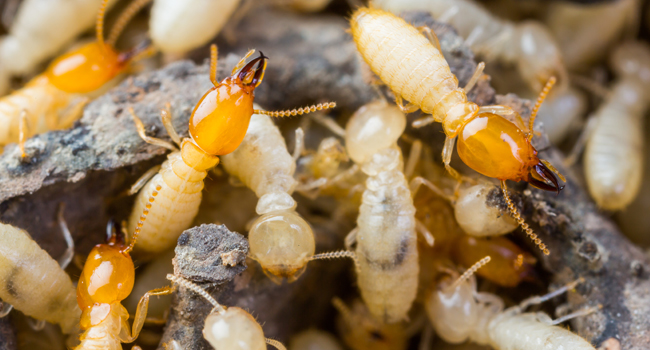
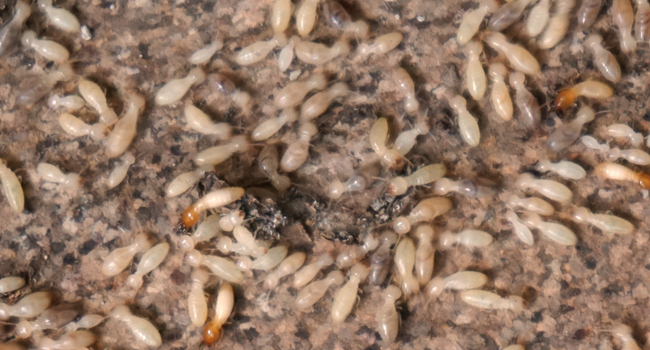
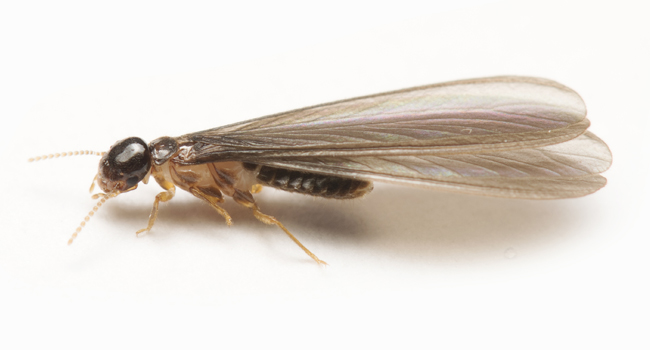
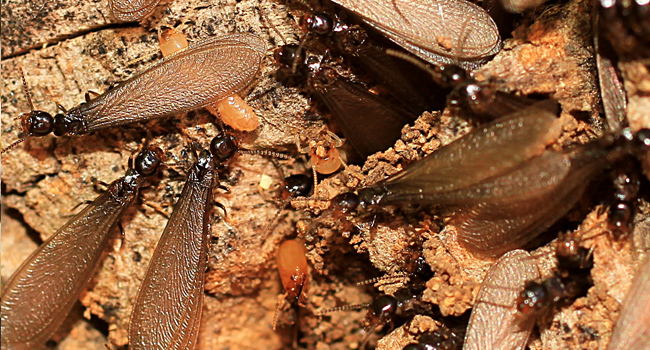
Other insects you might see
These creatures are commonly mistaken for termites, but are nothing to be alarmed by.
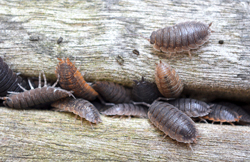


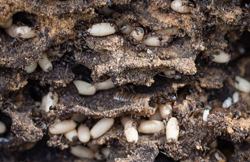
What to look for?
The three key signs of infestation are:
Presence of damaged timber. Timber my appear sound on the outside, but be hollow as result of termite activity on the inside. The damage may be checked by ‘sounding’ which involves tapping the timber with a solid object, such as the handle of a screwdriver.
Signs of live termites. The most common caste of termites are the workers. These are typically 4-6 mm in length, are pale or whitish in colour, have beadlike antennae and lack a ‘waist’ (a constriction of the first or second abdominal segments).
Signs of termite workings. Infestations of subterrean termites often include the presence of ‘mud tubes’ or tunnels that connect food sources and nesting sites. In the case of drywood termites, the two most common indicators are: 1) ‘kick holes’ from which dry, poppy seed-like faecal pellets are expelled, and; 2) flight holes in timbers from which winged (alate) drywood termites have flown, the alates then being found indoors in large numbers (in their tens or hundreds even in relatively localised infestations).
What to do if you think you’ve seen termites or signs of termites?
If you believe you have seen termites or signs of termite activity, past or present, please make contact with the Ministry of Housing, Communities & Local Government (MHCLG). It is important to minimise disturbance to suspected termite activity as this might reduce the chance of successful treatment, or may cause the termites to forage elsewhere and cause additional damage.
If you suspect that you have identified a termite colony please complete this form and send it to termites@hse.gov.uk
Where suspected specimens have been found, these should be collected and stored, ideally in a small jar filled with high grade alcohol (ethanol, spirit) or spirit vinegar.
